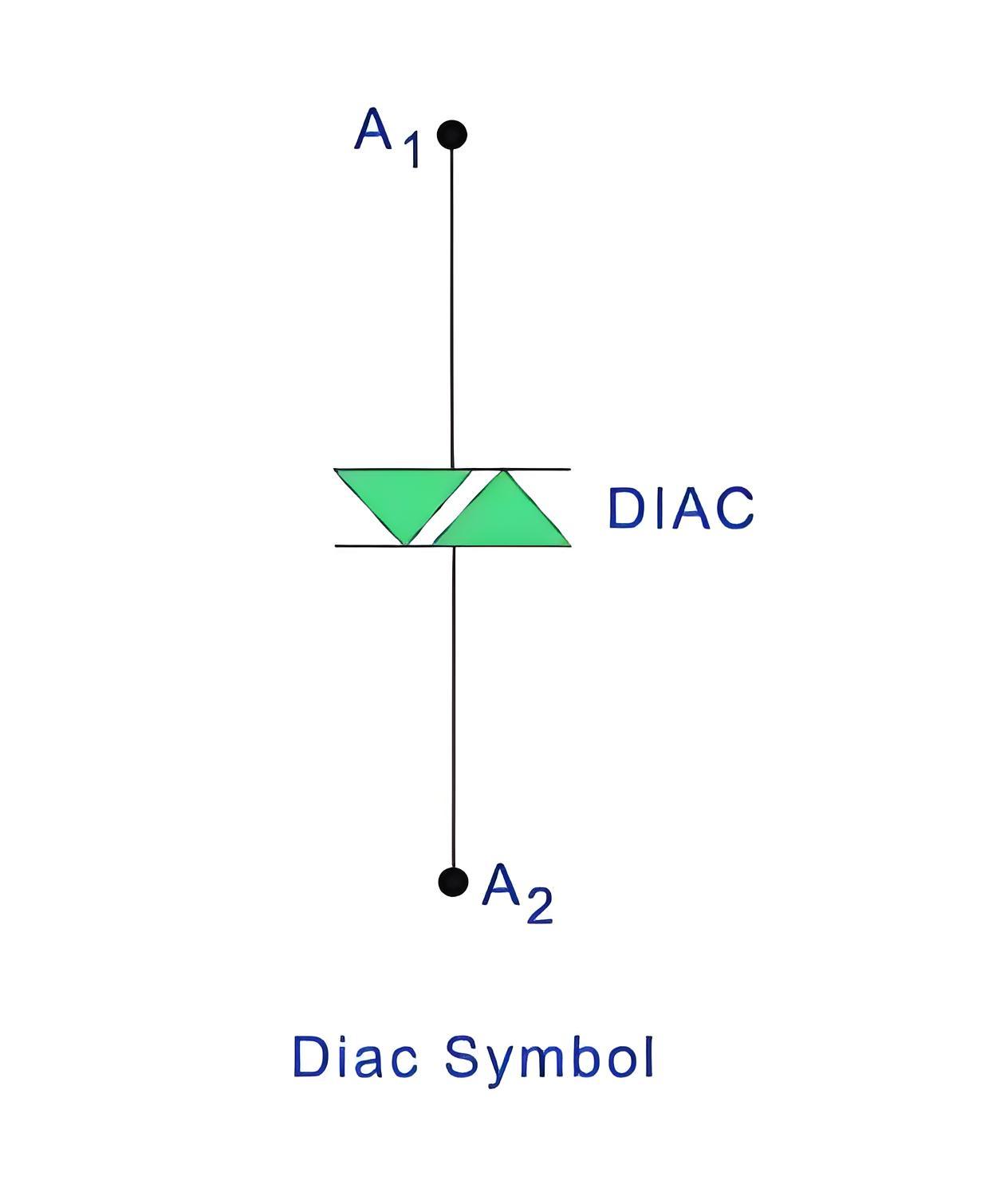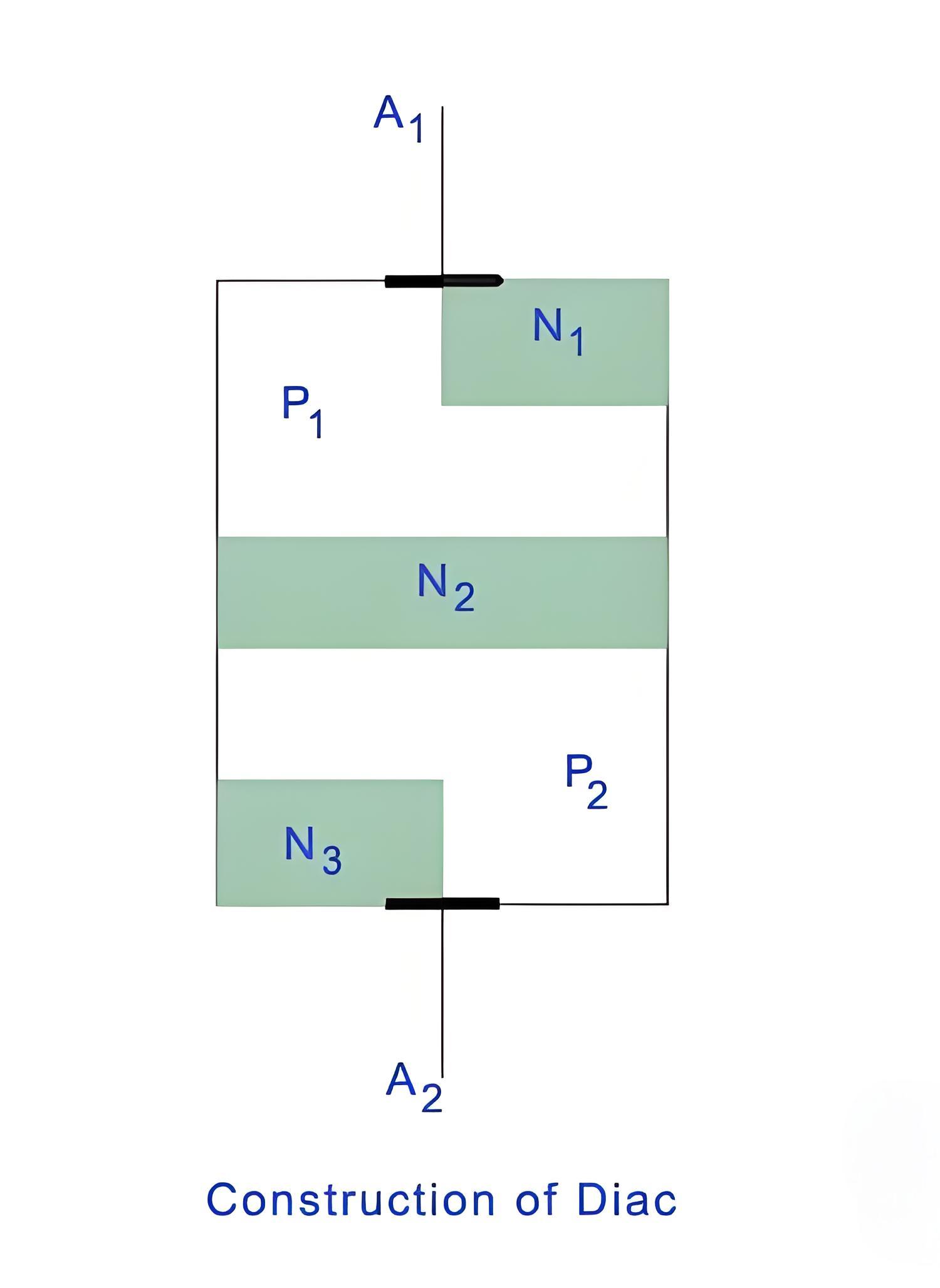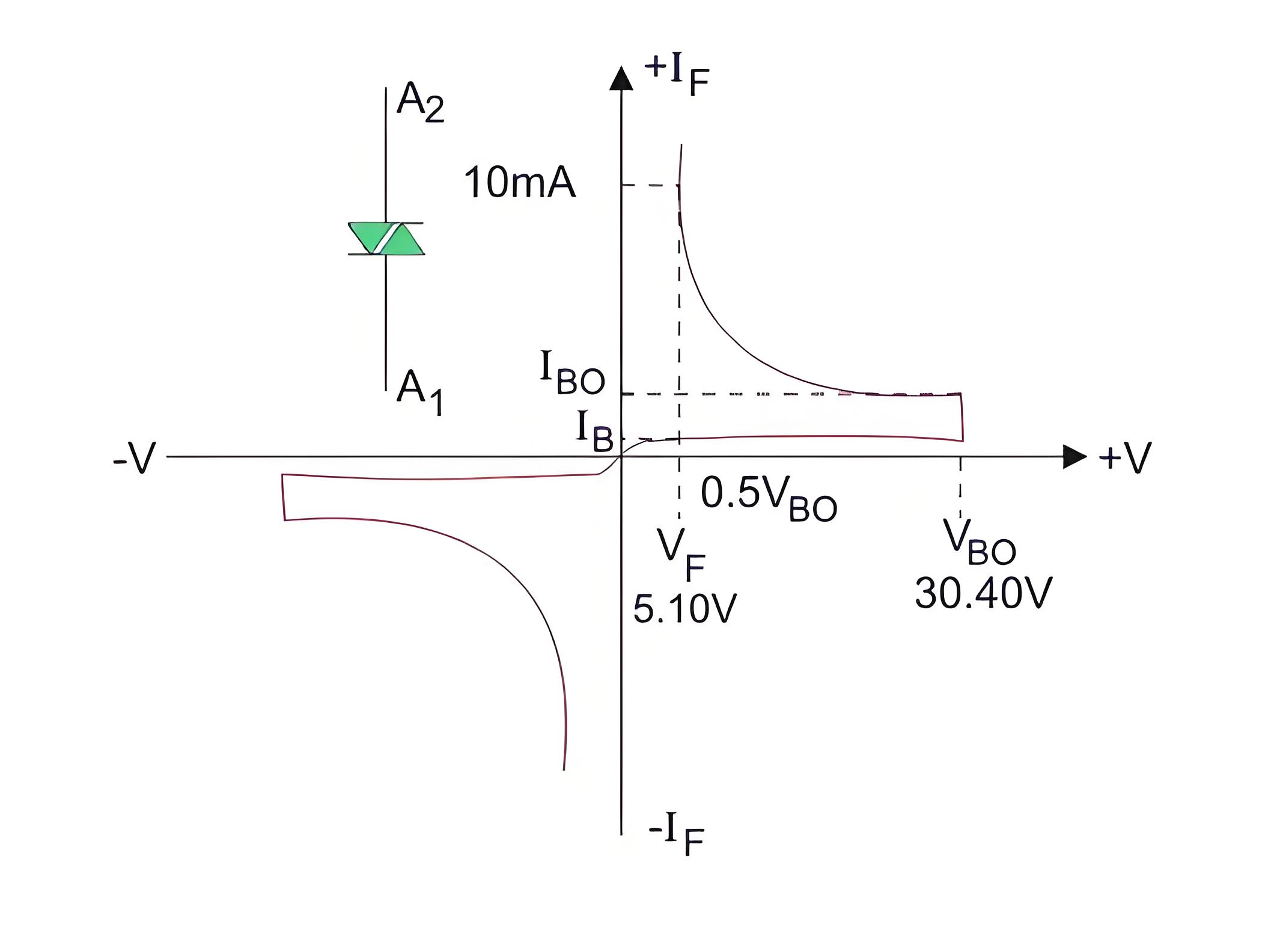What is a DIAC?
What is a DIAC?
DIAC Definition
A DIAC is defined as a diode that begins to conduct electricity only after its breakover voltage is exceeded, crucial in electrical circuits for controlling current flow.
A DIAC is a diode that conducts electrical current only after its breakover voltage (VBO) has been reached. DIAC stands for “Diode for Alternating Current”. A DIAC is a device which has two electrodes, and it is a member of the thyristor family. DIACs are used in the triggering of thyristors. The figure below shows a symbol of a DIAC, which resembles the connection of two diodes in series.

DIACs have no gate electrode, unlike some other thyristors that they are commonly used to trigger, such as a TRIAC.
The advantage of a DIAC is that it can be turned on or off simply by reducing the voltage level below its avalanche breakdown voltage.
A DIAC is sometimes referred to as a transistor without a base. Notably, it can be turned on or off with both positive and negative voltages and continues to function during avalanche breakdown.
Construction of DIAC
It is a device which consists of four layers and two terminals. The construction is almost the same as that of the transistor. But there are certain points which deviate from the construction from the transistor. The differentiating points are-
There is no base terminal in the DIAC
The three regions have almost the same level of doping
It gives symmetrical switching characteristics for either polarity of voltages

DIAC Characteristics
From the figure above, we can see that a DIAC has two p-type material and three n-type materials. Also, it does not have any gate terminal in it.
The DIAC can be turned on for both the polarity of voltages. When A2 is more positive with respect to A1 then the current does not flows through the corresponding N-layer but flows from P2-N2-P1-N1. When A1 is more positive A2 then the current flows through P1-N2-P2-N3.The construction resembles the diode connected in series.
When the applied voltage is small in either polarity, a very small current flows which is known as leakage current because of the drift of electrons and holes in the depletion region. Although a small current flows, it is not sufficient to produce avalanche breakdown, hence the device remains in the non-conducting state.
If the applied voltage exceeds the breakdown voltage in any polarity, the DIAC’s current increases, allowing it to conduct according to its V-I characteristics.

The V-I characteristics resemble English letter Z. The DIAC acts as an open circuit when the voltage is less than its avalanche breakdown voltage. When the device has to be turned off, the voltage must be reduced below its avalanche breakdown voltage.
Application of DIAC
The main application of a DIAC is its use in a TRIAC triggering circuit. The DIAC is connected to the gate terminal of the TRIAC. When the voltage across the gate decreases below a predetermined value, the gate voltage will be zero and hence the TRIAC will be turned off.Some other applications of a DIAC include:
It can be used in the lamp dimmer circuit
It is used in a heat control circuit
It is used in the speed control of a universal motor
A DIAC can be used with a TRIAC in a series combination for triggering. The gate of TRIAC is connected with a terminal of the DIAC. When the applied voltage across the DIAC increases above the avalanche breakdown voltage, only then it can conduct.
When the voltage across a DIAC falls below its avalanche breakdown voltage, the device turns off, causing the connected TRIAC to also remain off.
Conclusion of Diac
The DIAC is an important device in the thyristor family.
The main advantage of using this device is-
It does not switch sharply to a low voltage condition at a low current level as done by SCR or TRIAC.
It has low on state voltage drop until its current falls below the holding current level.
Voltage drop decreases with the increase in current.
The Electricity Encyclopedia is dedicated to accelerating the dissemination and application of electricity knowledge and adding impetus to the development and innovation of the electricity industry.













